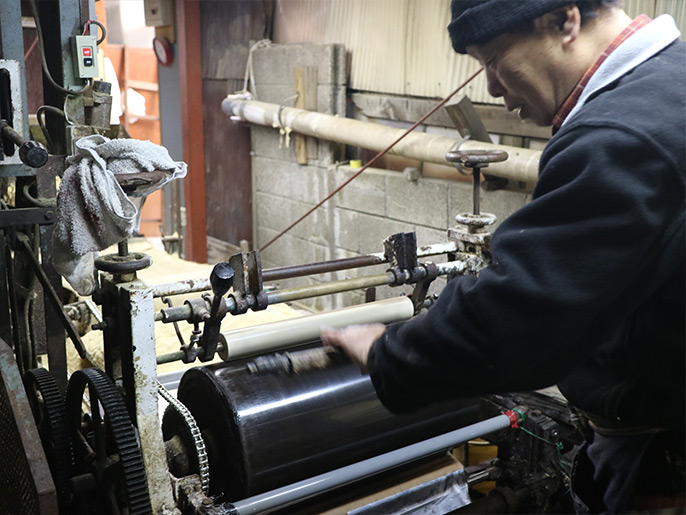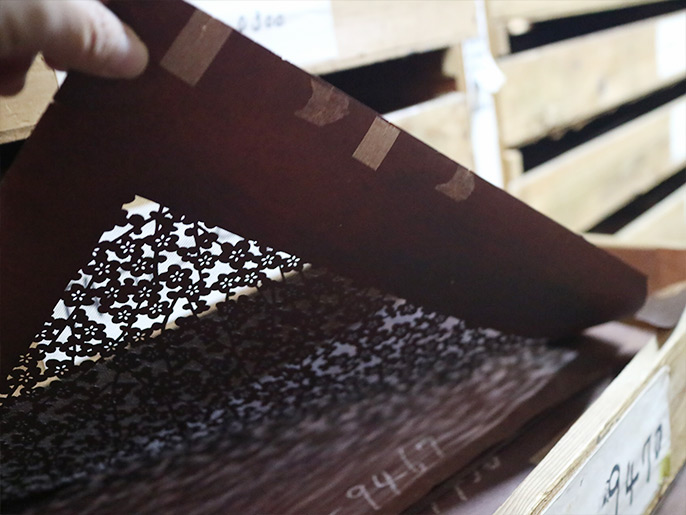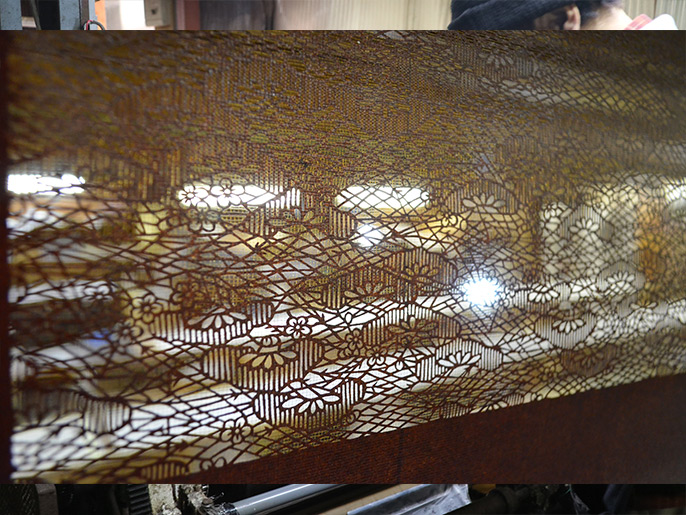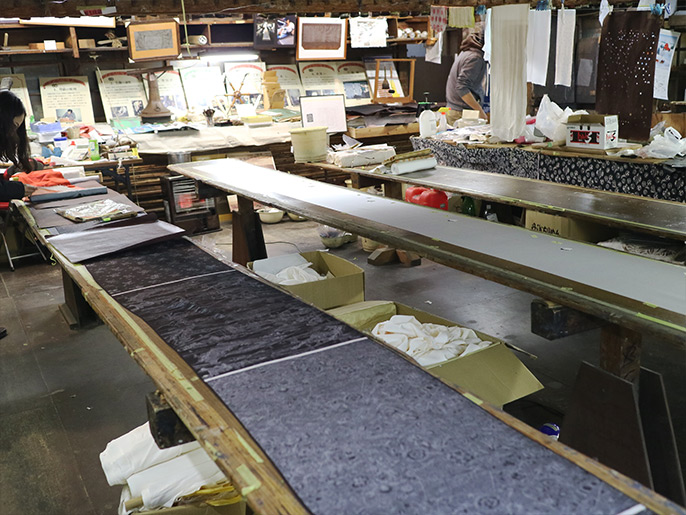Tokyo dye-works – style that exceeds patterns

The Edo Komon pattern is said to have begun as a printed pattern for the kamishimo official wear of the samurai. Viewed from a distance the pattern seems almost a single colour, while close up the dense and detailed work is revealed. The samurai competed to have ever more close and intricate patterning, and this gave birth to designs such as Gokusame (‘dense shark pattern’), and Kikibishi (‘chrysanthemum water chestnut’) and many others. By the mid Edo period, the wider population beyond just the samurai class, were able to afford to wear patterned fabrics, with natural scene motifs made with stencils a popular look. The Tomita dye works was established in 1914, as a workshop specialising in Edo Komon and Edo Sarasa among other patterns. The workshop in the area of the Shinjuku-ward given over to dye-works, is atmospheric with the accoutrements of the trade in evidence such as the ‘steam box’ used to set colour onto fabrics. An historic workshop, the number of stored Ise-katagami paper stencils, reaches to around 120,000 when those used for Edo-Sarasa and Edo-Komon patterns are combined. Many of these feature modern designs. The fifth generation leader of the Tomita dye-works is Atsushi Tomita, who has advanced designs for sunshades and scarves and other items that meet contemporary needs, but retain the dyed Edo Komon and Edo Sarasa motifs. The Tomita works are even responsible for the production of the ‘Furoshiki cloth’ series of official goods for the Tokyo Olympic and Paralympic games in 2020. Beyond their origins in the kimono fashions of the past, the dye-works still today retain the spirit of the style-conscious samurai and Edo locals that first gave them life.



Tomita Sen-Kogei Co.,Ltd.
3-6-14,Nishi-waseda,Sinjuku-ku,Tokyo 169-0051
Tel:+81-3-3987-0701
Fax:+81-3-3980-2519
Atsushi Tomita
tomisen@mtj.biglobe.ne.jp
https://tomita-senkougi.com/


